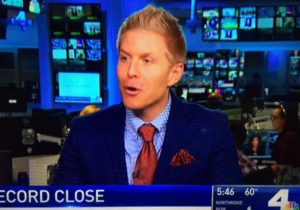
Good Financial Advice Made to be Broken – Lowering Your Taxes Part 2. Sometimes following financial advice, while technically correct, could turn out to be a costly mistake. It is important to note that the correct choice and the best choice are not always the same thing. The following are the three most egregious examples I saw this tax season where people took factually correct information that in reality was financial terrible advice. Will the best financial advice go horribly wrong for you and your wallet? More Roth IRA is not always better and one investor learned the hard way.
By David Rae Certified Financial Planner™, Accredited Investment Fiduciary™
The more ROTH IRA the Better: Financial Advice to Break Part 2
Saving more for Retirement is not Always a good thing. An engineer, let’s call him Bob, contacted me for help because he put too much money into his ROTH IRA.
Bob did his research and decided a Roth IRA was the best retirement account for his situation. Also, he realized he was behind on his accumulation of wealth for retirement. The Roth IRA is a very popular retirement account, and the average American is not on track to replace their income in retirement.
In order to try and catch up, Bob put in a whopping $200,000 into his Roth IRA at the end of 2016. This caused him two big problems. First, you can only put $5,500 into a Roth IRA each year, and if you can save $200,000 in a single year, you likely are not eligible to contribute to a Roth IRA.
Unaware of his over contribution, Bob was loving his ROTH IRA. He was trading heavily and riding the wave of the stock market from late 2016 until today. He had done quite well and this account had ballooned to more than $300,000. As far as Bob knew, things were great until he got a notice from the IRS inquiring about his excess contributions to his Roth IRA.
Does the IRS Track Retirement Account Contributions?
The IRS will eventually figure out if you put too much money into a retirement account and the penalties are large for over-contributing. There is a six-percent fee for ineligible contributions that are paid using form 5329 when filing your taxes. If the mistake is not corrected, the fee will be applied to each tax year the money is in the account.
In Bob’s case, the overcontribution penalty was applied to tax years 2016 and 2017 into 2018. I won’t bore you with the exact calculations, but it was a big penalty. But this isn’t where the pain ends for Bob.
For the profits on this account, he will not be able to take a qualified distribution and will likely incur a 10% early withdrawal penalty. In addition to paying substantial penalties, he will also owe taxes on the $100,000 in earnings. Bob’s intentions were good but his execution led to a financial mistake.

Live for Today, Plan for a Richer Tomorrow.
DAVID RAE, CFP®, AIF® is a Los Angeles- retirement planning specialist with DRM Wealth Management. He has been helping people reach their financial goals for over a decade. He is a contributor to Forbes.com. Has also written for the Advocate, Investopedia and Huffington Post. Follow him on Twitter @davidraecfp on Facebook or www.davidraefp.com.
For Financial Advice to Break Part one check out:
Financial Advice Part 3 – Avoid The Alternative Minimum Tax
or
Earning Less to Pay Less Taxes? Financial Advice to Break Part 1










[…] of now, the most significant changes are coming to the income ranges that allow contributions to a Roth IRA or deductible contributions to a traditional IRA, according to the […]
[…] between a ROTH IRA and a ROTH 401(K). Before that, I just wanted to cover the basics of a ROTH IRA. You won’t get a tax deduction for making contributions like you would with a traditional IRA or […]